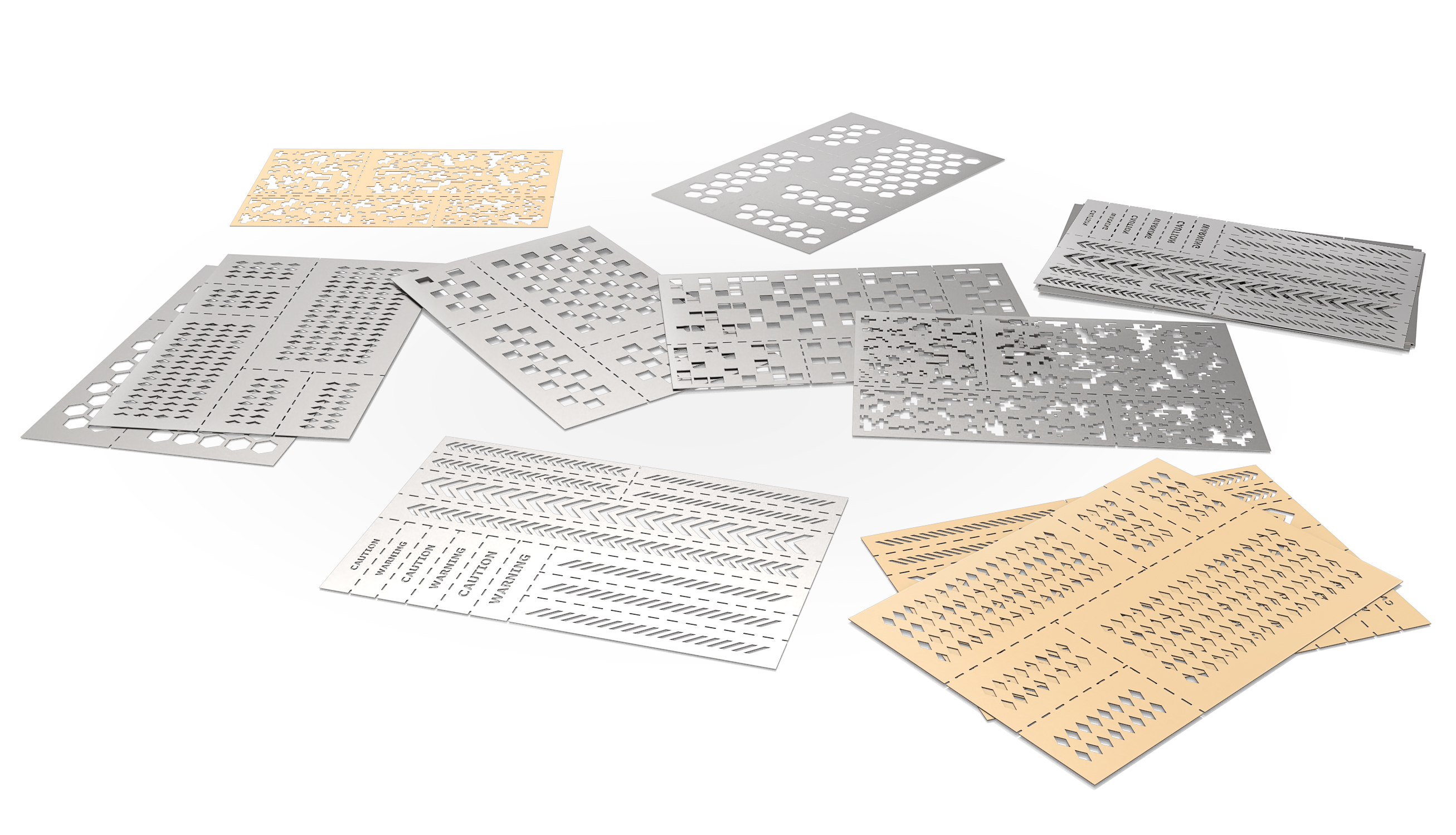Reference: 8436554360475ES
Brand: Green Stuff World
Metal sheets for magnets
Metal sheets for magnets | Rubber Steel Sheet Self Adhesive
Reference: 8436554360475ES
Brand: Green Stuff World
Metal sheets for magnets | Rubber Steel Sheet Self Adhesive
Reference: 8435646506234ES
Brand: Green Stuff World
Brush Rinser | Paint Brush Cleaner toolCopyright © 2022 Green Stuff World SL. All Rights Reserved.
Reference: 8436554365050ES
Brand: Green Stuff World
Instant glue | CA glue
Reference: 5035167000490ES
Brand: Green Stuff World
Milliput Standard Yellow Grey - Epoxy putty for all kinds of applications.
There are 39 products.
Reference: 8436554369454ES
Brand: Green Stuff World
Self-adhesive stencils
Reference: 8436554369447ES
Brand: Green Stuff World
Self-adhesive stencils
Reference: 8436554369478ES
Brand: Green Stuff World
Self-adhesive stencils
Reference: 8436554369461ES
Brand: Green Stuff World
Self-adhesive stencils
Reference: 8436554369430ES
Brand: Green Stuff World
Self-adhesive stencils
Airbrush Stencils for miniatures are adhesive templates used with an airbrush to create precise, detailed designs or patterns on a variety of surfaces. They are typically made of thin, flexible materials such as mylar, vinyl, or thin cardboard, and have cut-out areas that correspond to the desired design.
Stenciling is a technique used by miniature wargamers and modelers to create detailed and precise designs on their creations. By using Stencils for Airbrushing and an airbrush, miniature wargamers, and modelers can easily add intricate patterns and designs to their models and wargaming terrain, creating a professional and polished finish.
First, place it on the surface of the model or terrain piece that you wish to decorate. Then, using an airbrush, carefully apply the desired paint color through the cut-out areas of the stencil, using a back-and-forth motion to ensure even coverage. The Hobby Stencil will block the hobby paint from certain areas, creating the desired pattern or design on the model or terrain piece.
They are commonly used in the production of automotive and motorcycle graphics, as well as in the fields of fine art, hobbies, and crafts.

There are many different types of Stencils for Airbrushing available on the market, each with its own unique set of patterns and designs. Some of them are designed specifically for creating certain types of patterns, such as camouflage or brickwork, while others have a more general selection of patterns that can be used for a variety of purposes. Some are even adjustable, allowing the user to change the size and shape of the patterns to create a custom design.
One of the advantages of using Stencils for miniatures is that it allows for greater precision and accuracy in miniature wargaming and modeling. By using them, miniature wargamers, and modelers can easily create complex and detailed designs without the need for steady hands or a steady hand. A painting stencil can also be used in combination with other modeling techniques, such as dry-brushing or textured rolling, to create even more intricate and realistic details.
In addition to their aesthetic benefits, they can also serve a functional purpose. Some patterns, such as letters or numbers, can be used to add labels or identification marks to models or terrain pieces. Other patterns, such as circles or squares, can be used as a guide for cutting or shaping the model or terrain piece.
Overall, painting tools are a valuable resource for miniature wargamers and modelers. They allow for precise and accurate decoration of models and terrain, and can also serve a functional purpose in the modeling process. With a wide variety of patterns and designs available, there is a painting stencil to suit every wargamer and modeler's needs and preferences.
Cleaning your airbrush templates after airbrushing is an essential step to maintain their longevity and ensure accurate and crisp designs for future use. Proper cleaning techniques will help remove any paint residue and prevent clogging of intricate details. Here are some effective methods to clean them perfectly:
Remember to handle hobby stencils with care during the cleaning process to avoid bending or tearing. It's also important to clean them immediately after use, as dried paint can be more challenging to remove.
And the best part is that they can be easily purchased at Green Stuff World, the online shop for all your miniature wargaming and modeling needs. We offer a wide range of Discover our selection of products today and start adding professional and detailed designs to your models and terrain.
Airbrush stencils for miniatures can be used with any type of paint with the appropriate density for an airbrush. Theoretically, any paint can be diluted to reach the necessary consistency to flow inside the device. However, there are paints designed exclusively for airbrushing that ensure optimum results with stencils for airbrushing. There are 3 different types: acrylic, enamel, and uterane. All of them guarantee a consistent and uniform coverage with a sufficiently fluid consistency so that they do not get stuck in the nozzle.
Their characteristics include very finely ground pigments to avoid blockages in the device, and a smooth and uniform application. In addition, they usually include specific additives that improve their performance in several factors: drying time, resistance to fading and cracking, and adhesion to different surfaces.
Acrylics are among the easiest to use and clean. They are the most widely used with a stencil because of their versatility on a large number of surfaces (paper, metal, wood, plastic, and canvas) and because of their fast drying time, which allows for detailing and working in layers.
Enamels, on the other hand, have smooth, durable, and glossy finishes, although they should be used with caution because their vapors are stronger. They are perfect for automotive and projects that require resistant coatings.
If you choose to use non-specific paints in stencils for airbrushing, you can use acrylic thinner or water to change their density, although you must do it in a balanced way to achieve the right fluidity. To do this is as simple as pouring a little color on a palette or mixing cup and gradually add the thinner while stirring until the desired consistency is achieved.